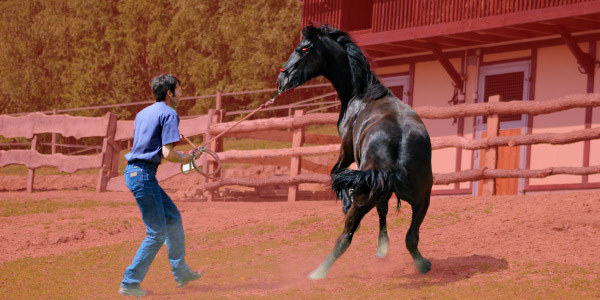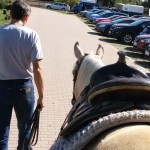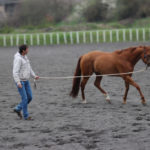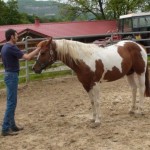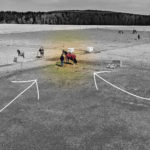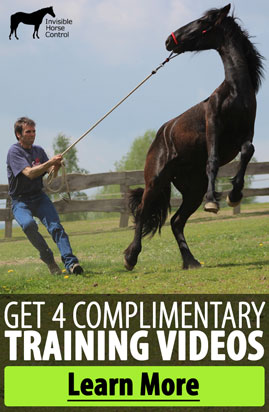There are a lot of little issues that you will have to overcome and solve while working with your horse. Some horses are going to have more of them than others, but there are always going to be some issues for you to deal with.
There is no way to make sure that there are not going to be any issues, but there is a way to make sure that you are not going to have big issues.
What do I mean by a big issue?
For example when your horse bucks so much that you are unable to stay in the saddle.
When he continues running away from you in the pasture and you are unable to catch him.
When he starts biting you and you become scared of him.
Simply things that you are no longer able to solve by yourself.
Big issues can almost always be prevented
Big issues can be avoided because a big problem never comes all at once. Your horse is going to be testing you and he is going to be watching whether you allow him to misbehave, or whether you don’t.
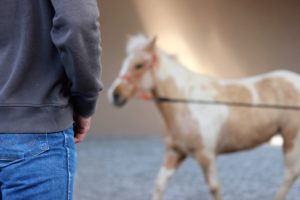
Having a big problem means that you were ignoring little problems, or that you simply didn’t see them.
Your horse learns by observing the way you react to his actions.
He is going to be learning to do the good things, that you actually want him to be doing, but also the bad things if you don’t pay enough attention.
How does it look from your horses perspective?
You sit on your horse for the first time and ask him to walk, but of course, he doesn’t know what it means when you squeeze him with your legs.
So you squeeze him and if he doesn’t start walking, which is completely normal in the very beginning, just continue squeezing him while gradually increasing the pressure.
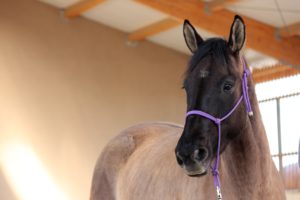
Continue pressing your horse with your legs until he starts walking or at least does a few steps forward. As soon as he moves forward, immediately release the pressure.
Like that, your horse will quickly understand that if he starts moving, you will stop squeezing him. He will know the way to get rid of your pressure.
Most horses are going to learn to react pretty quickly when you ask them to go because they will know that you will stop squeezing them with your legs if they do.
This is how horses get spoiled
Imagine this: you ask your horse for trot or canter, but instead of going to canter, he bucks.
If you stop urging him after he bucks, you are telling him that he can get rid of you urging him by bucking.
Basically, he learns that if he is in trot and you press him with your leg, he should buck because you willl stop urging him.
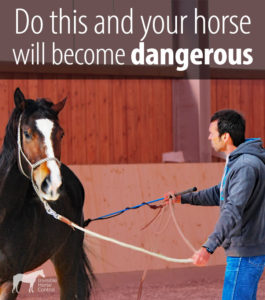
Pin this article on your Pinterest
I am sure you do not want your horse to be bucking.
So what I do when my horse bucks is that I continue urging him until he stops bucking. As soon as he stops bucking and starts cantering I stop urging him. Like that he sees that the only way to get rid of me urging him is by going to canter.
It is most likely going to be easy to stay in the saddle when your horse bucks for the first time.
It is probably going to be a very small buck. If you react well, you are going to be able to solve the issue very quickly.
If you do not react correctly however and you, for example, stop urging him after he bucks, when he starts bucking next time, he is going to buck harder.
Do not correct him a few times in a row and he is going to start bucking so hard you will most likely fall and you will no longer be able to fix the issue.
So do you know what is the one thing that will get your horse spoiled and dangerous?
It is ignoring all the little mistakes. Correct everything, even the “small mistakes” and your horse will never end up doing the big mistakes.
If you want to learn the number one “small mistake” that is guaranteed to spoil your horse take a look at my Free Training Series by clicking here.
